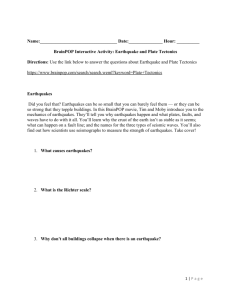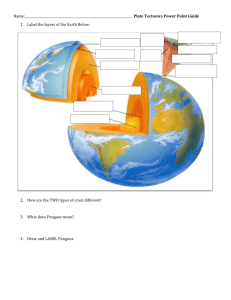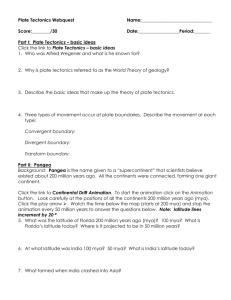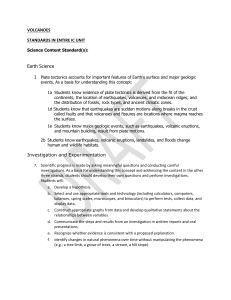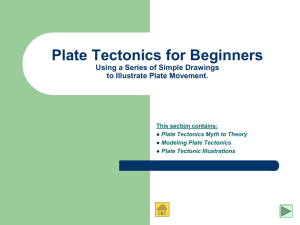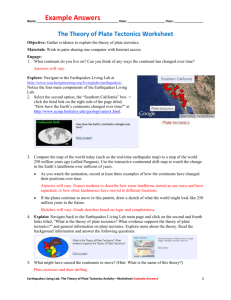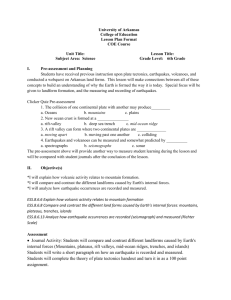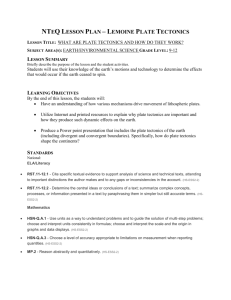Plate Tectonics II Student activity
advertisement
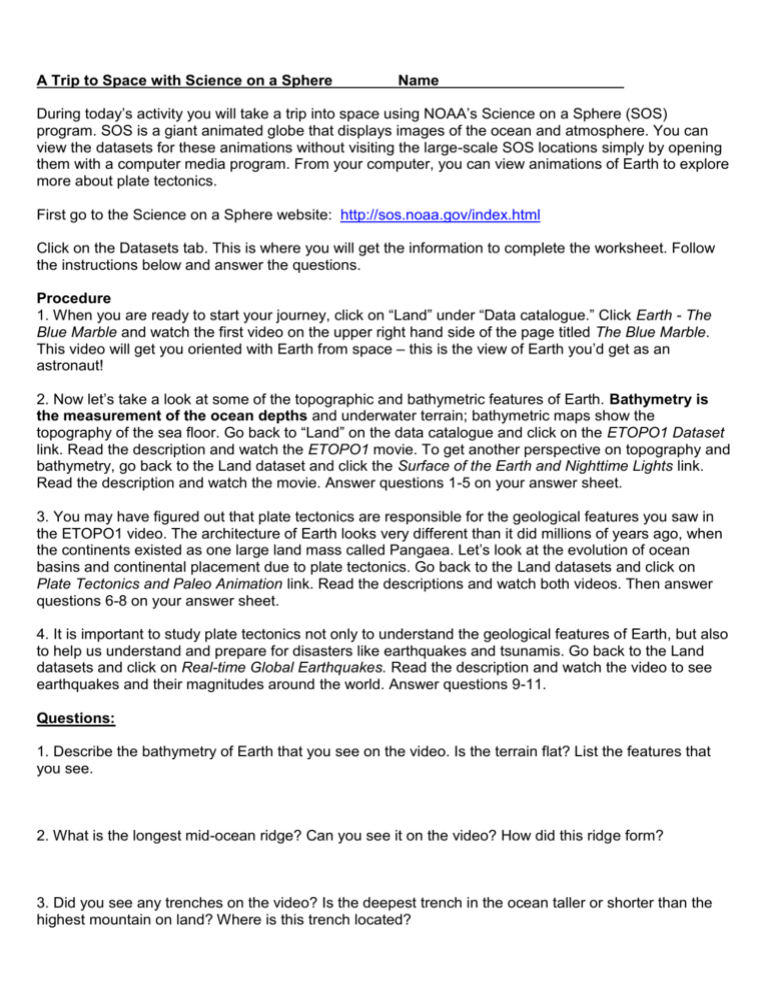
A Trip to Space with Science on a Sphere Name During today’s activity you will take a trip into space using NOAA’s Science on a Sphere (SOS) program. SOS is a giant animated globe that displays images of the ocean and atmosphere. You can view the datasets for these animations without visiting the large-scale SOS locations simply by opening them with a computer media program. From your computer, you can view animations of Earth to explore more about plate tectonics. First go to the Science on a Sphere website: http://sos.noaa.gov/index.html Click on the Datasets tab. This is where you will get the information to complete the worksheet. Follow the instructions below and answer the questions. Procedure 1. When you are ready to start your journey, click on “Land” under “Data catalogue.” Click Earth - The Blue Marble and watch the first video on the upper right hand side of the page titled The Blue Marble. This video will get you oriented with Earth from space – this is the view of Earth you’d get as an astronaut! 2. Now let’s take a look at some of the topographic and bathymetric features of Earth. Bathymetry is the measurement of the ocean depths and underwater terrain; bathymetric maps show the topography of the sea floor. Go back to “Land” on the data catalogue and click on the ETOPO1 Dataset link. Read the description and watch the ETOPO1 movie. To get another perspective on topography and bathymetry, go back to the Land dataset and click the Surface of the Earth and Nighttime Lights link. Read the description and watch the movie. Answer questions 1-5 on your answer sheet. 3. You may have figured out that plate tectonics are responsible for the geological features you saw in the ETOPO1 video. The architecture of Earth looks very different than it did millions of years ago, when the continents existed as one large land mass called Pangaea. Let’s look at the evolution of ocean basins and continental placement due to plate tectonics. Go back to the Land datasets and click on Plate Tectonics and Paleo Animation link. Read the descriptions and watch both videos. Then answer questions 6-8 on your answer sheet. 4. It is important to study plate tectonics not only to understand the geological features of Earth, but also to help us understand and prepare for disasters like earthquakes and tsunamis. Go back to the Land datasets and click on Real-time Global Earthquakes. Read the description and watch the video to see earthquakes and their magnitudes around the world. Answer questions 9-11. Questions: 1. Describe the bathymetry of Earth that you see on the video. Is the terrain flat? List the features that you see. 2. What is the longest mid-ocean ridge? Can you see it on the video? How did this ridge form? 3. Did you see any trenches on the video? Is the deepest trench in the ocean taller or shorter than the highest mountain on land? Where is this trench located? 4. How do these trenches form? 5. When you watch the Surface of the Earth and Nighttime Lights video, look closely when North America comes into view. Can you see the Hawaiian Islands? 6. When did the “super continent” Pangaea start to break apart? 7. When did the Appalachian Mountains form? What type of plate movement caused the mountains to form? Can you name another large mountain range that formed because of this type of plate movement? 8. Collision of which two land masses caused the Himalayas to form? 9. Describe the distribution of earthquakes and their magnitude across the globe. Name a few locations where you see them occurring. 10. Some earthquakes are related to plate tectonics. What type of plate movement results in an earthquake? What well-known geological feature results in earthquakes in California? 11. The descriptions on some of the SOS videos indicate that data about plate movement can help scientists predict and prepare for tsunamis. How do you think the data you’ve seen today could help to predict and prepare for these events?
